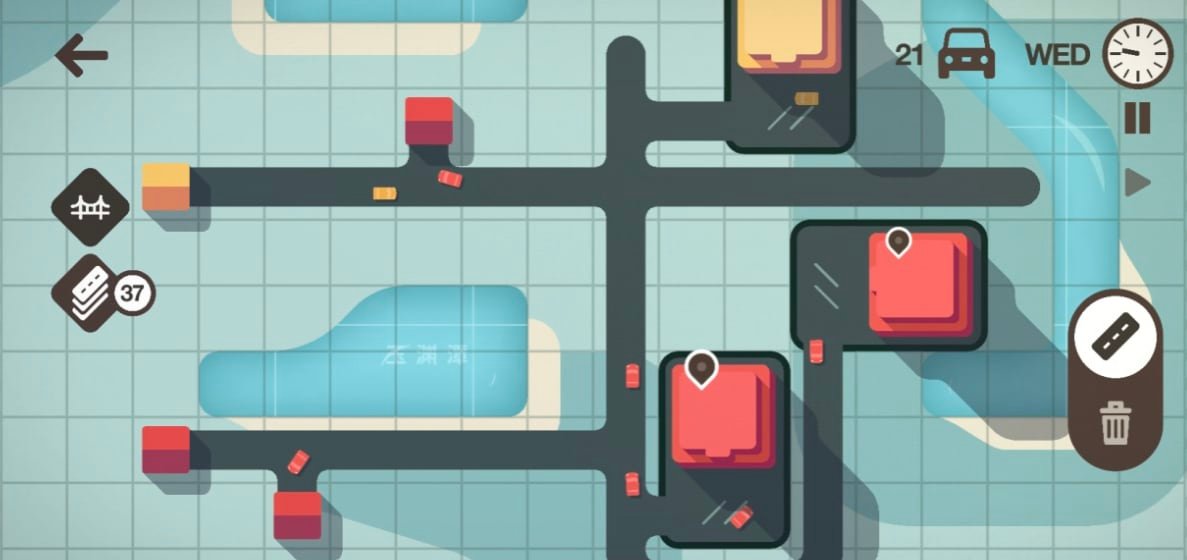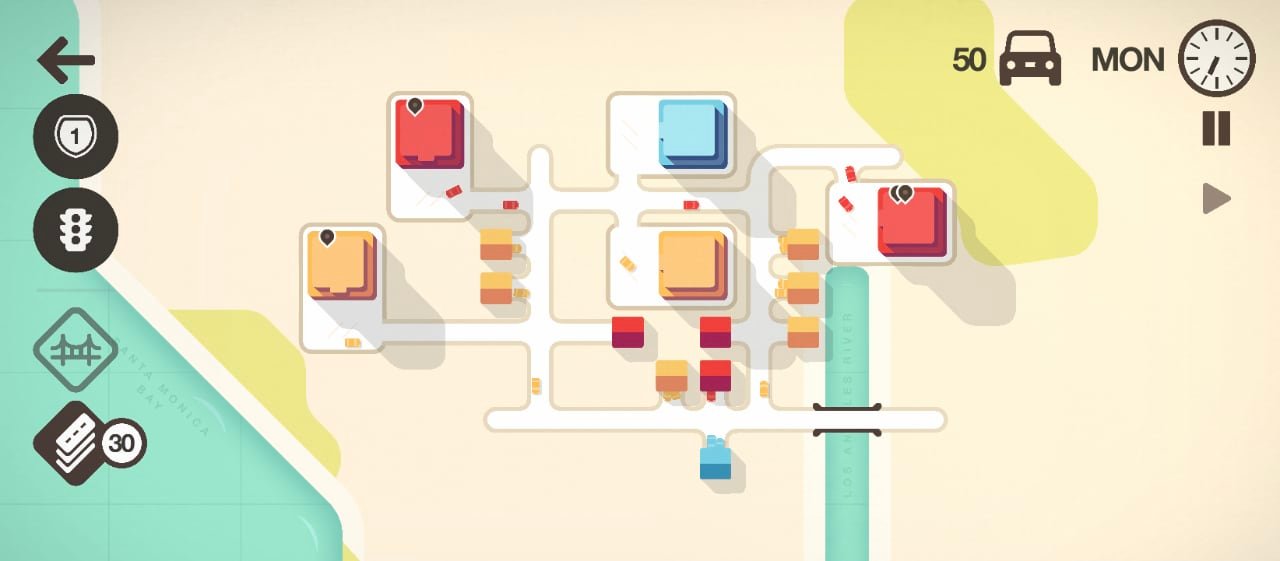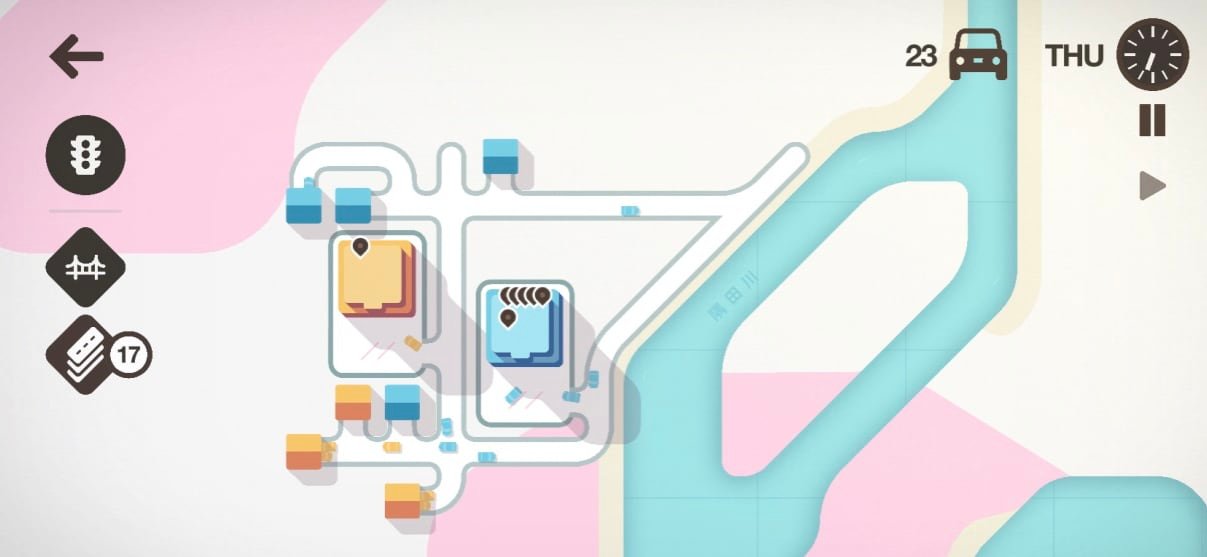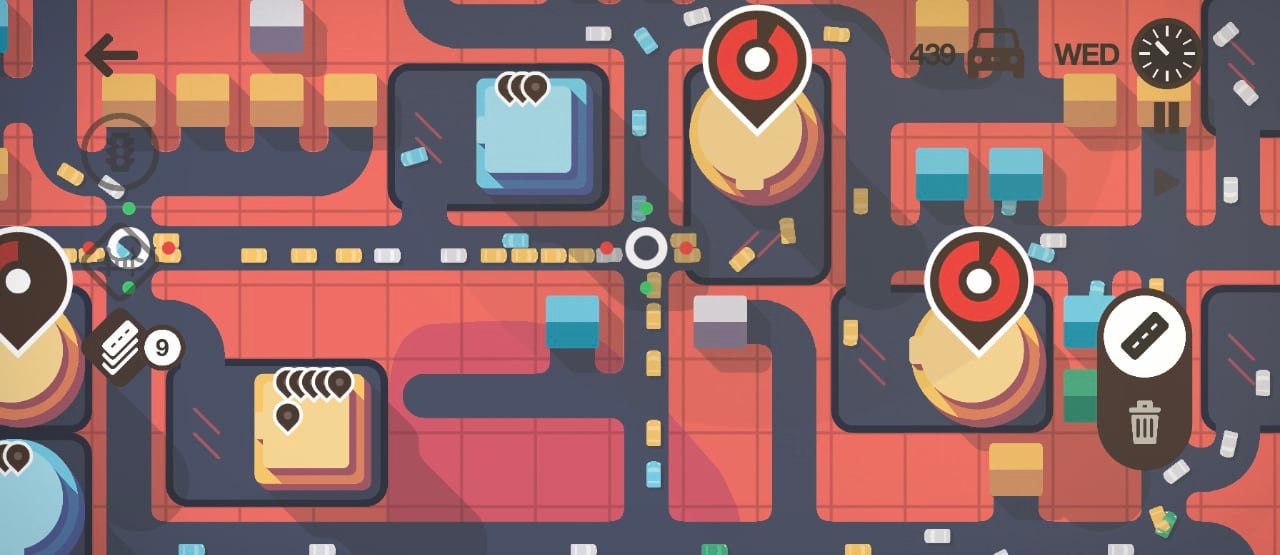
Mini Motorways
Build roads, grow cities, fight gridlock
Do you know those moments when you’re sitting in deep stop-and-go traffic that goes on for miles? The traffic that makes you lazily slouch down in your seat and turn up the volume to your podcast, to distract you from the boredom? Perhaps you wonder to yourself, who designed these roads? Well, now it can be you.
Mini Motorways is a city simulation game by Dinosaur Polo Club. Your task is to build a road network that can support a growing, sprawling city. It’s a follow up to Dinosaur Polo Club’s earlier game, Mini Metro.

Los Angeles
I first take on the task of planning roads for Los Angeles, a city notorious for dense and never-ending traffic. Something makes me think I can do better. (It’s a game, right? How hard can it be?)
Specifically, Los Angeles is vast and open, with only the Los Angeles River (and later, the San Gabriel River) to get in the way of your planning. As the game starts and time passes, colored houses and factories pop up. The houses provide a few cars of traffic, and the cars leave home to a store or factory of the same color, and then turn around and return home.
Since LA is my first experience with the game, I’m soon caught out by learning the systems yet. I don’t yet know how to foresee the problems here, so my road development is just blindly connecting new houses and buildings to my road network without much rhyme or reason. I don’t know how to anticipate where buildings will grow, and this gets me caught in awkward corners. My first (and expected) loss comes because I never expected how to grow across the Los Angeles River. Next time, I’ll build across the river in advance of things popping up there, and start to preestablish a grid.

Tokyo
My next contract is in a new city: Tokyo. This city presents a slightly different challenge from Los Angeles. The Sumida River (隅田川) is my first foe—It doesn’t take too long for the game to start throwing stores and houses on the other side of it.
I build on what I’ve learned from LA and decide to establish a grid layout. If you’re thinking about a grid, when a new building appears, try to extend the roads well past the building with your extra road tiles long enough so intersections can naturally form. Also, since you can connect houses to a path from any of their sides, flipping houses seems to be a more critical strategy, so I can start reducing their pressure along main roads.

Beijing
Beijing is the next map I sunk my teeth into, and honestly, it took me a few attempts to get right. There are a small river and lake here, and both manage to get in the way. I feel like Beijing is more big-building dense than the other cities I’ve played too.
I’ve refined my grid strategy a bit here, and also picked up a few other strategies. For example, to reduce the number of intersections, I’ve started to focus on tertiary roads that connect to major arterial grid roads—these tertiary roads focus more on dead-end home traffic, and the grids hold more store/factory traffic.
I’ve also picked up the habit of pausing when a new factory drops. I’ve quite often found that the large buildings drop in awkward spots, and as I’m going to paint down new roads, a house will pop into my planned path unexpectedly.

Russian to download it
Overall, Mini Motorways is a more zen-like experience than Mini Metro. Once you start to pick up skills that help you better understand the game and its traffic flow—like pre-planning a grid, tertiary roads, etc.—it feels like you have much better control over the game. When I fail, it’s mostly due to shortcomings in anticipating traffic, not from a bout of randomness—like fifteen people decided to stack up at a metro station that I suddenly have to account for (like in the previous game). You also usually have a bit of time to recover from these misses, or can plonk down a motorway as an exhaust path.
Mini Motorways is available now for Apple Arcade. Each game can last from just a few minutes to a max of about 20 minutes (all depending on how well you do), but you can undoubtedly get hours of playtime out of this game.